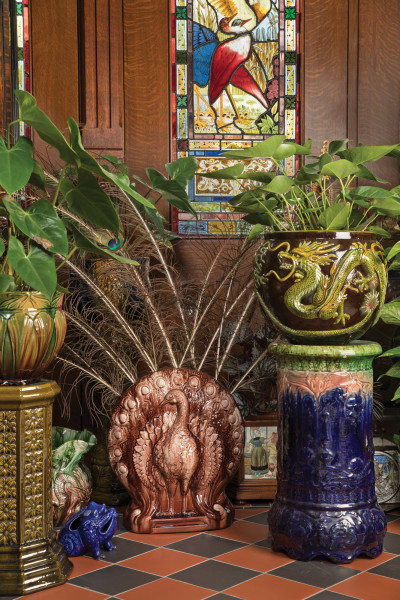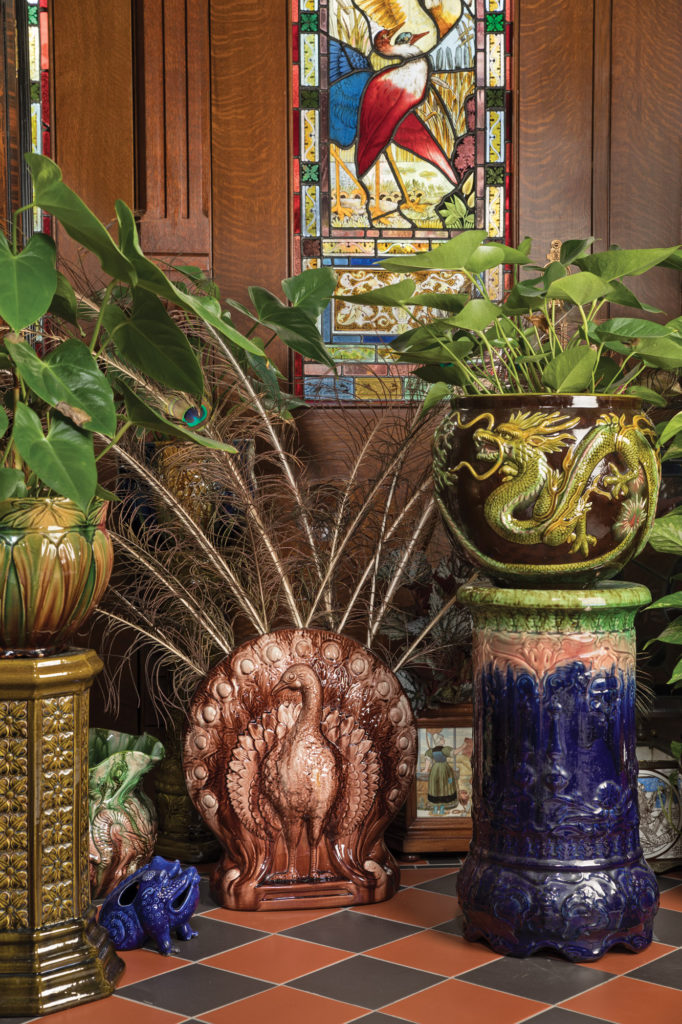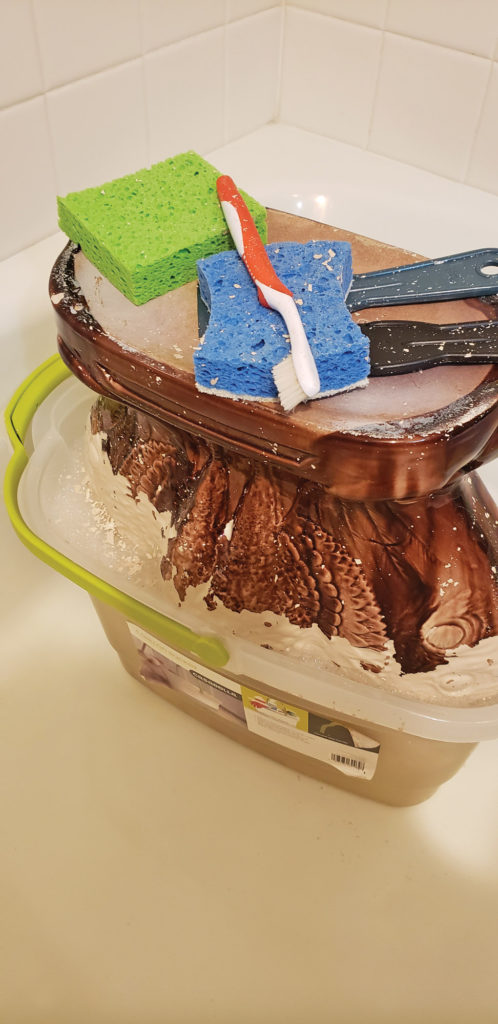Now stripped and filled with peacock feathers as it was meant to be, the antique vase has taken its place in a Victorian conservatory.
Her peacock was more like a white elephant, the seller admitted. The two-foot-tall vase, painted white, was just taking up space. But when one buyer saw it online, he knew its history right away: This was actually a somewhat rare bit of 19th-century English pottery. Designed in the 1880s by none other than Christopher Dresser, for William Ault Pottery of Swadlincote, Derbyshire, the moon flask-shaped vase is punctuated with holes along the top for the display of a fan of peacock feathers. So Aesthetic Movement!
Bringing it back
1. SOAKING THE PAINT OFF
The piece was unrecognizable, its shiny majolica glaze obscured under a thick coat of dirty white paint. Paint removal depends on the type of paint and the original glaze.
A well-applied and fired glaze will stand up to soaking and light scrubbing. But it’s always a good idea to test a small area—like the bottom—first. Acrylic and latex paints are the easiest to remove. After testing, soak the piece in soapy water overnight, then gently scrub with a soft brush; never use abrasives such as sandpaper or wire brushes. Several soakings may be necessary to completely loosen all of the old paint. In the case of the majolica vase, the paint was latex and the hard, fired glaze was stable. After a soak, the paint came off with a nylon paint scraper, a soft-bristle toothbrush, and a small plastic toothpick. And some patience.
2. STRIPPING PAINT
If soapy water is not effective, the paint is probably oil-based. Working in a well-ventilated area, wearing eye protection and gloves, test a small area with one solvent at a time (never mix them): rubbing alcohol; acetone (nail-polish remover); mineral spirits (paint thinner). Another option is a citrus-based solvent. When you find the solvent that will remove the paint without damaging the glaze, finish stripping.
3. DRYING & BUFFING
Once the paint had been removed, this piece needed one more wash with soap and water and then a clear rinse. Then it was toweled dry and polished with a soft, lint-free cloth.









